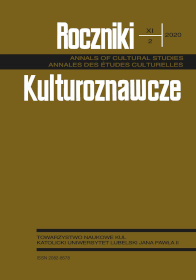Osioł w „Ucieczce do Egiptu”. Analiza wybranych przykładów malarstwa tablicowego pochodzących z Polski z 2. połowy XV i początków XVI wieku
The Donkey in “Flight into Egypt”: The Analysis of Selected Examples of Panel Painting in Poland from the Second Half of Fifteenth and Early Sixteenth Centuries
Author(s): Karolina PukalukSubject(s): Fine Arts / Performing Arts, Visual Arts, History of Art
Published by: Towarzystwo Naukowe KUL & Katolicki Uniwersytet Lubelski Jana Pawła II
Keywords: donkey; Flight into Egypt; Holy Family; panel painting in Poland
Summary/Abstract: The figure of the donkey appears in the painting scenes based on Old and New Testaments. The topic of the “Flight into Egypt” was taken in two ways. According to the first, the Holy Family’s travel was depicted, the animal carries Mary and Jesus, it steps behind saint Joseph who sometimes keeps the donkey on the bridle. The sojourn was also presented, man reaches for fruit which angel gives him. Mother of God and the Saviour sit on the doneky’s back. The animal is bowed and is going to eat the plants.The profile of the donkey is pictured, his hair have different grey tones: from light to dark. The anatomy is correct, setting of legs shows motion. The harness is on the animal’s head. The donkey doesn’t interface with Holy Family, but it knows who the Boy is. The animal expresses a lot of positive features—calm, pride, obedience and wisdom.
Journal: Roczniki Kulturoznawcze
- Issue Year: 11/2020
- Issue No: 2
- Page Range: 207-223
- Page Count: 17
- Language: Polish

